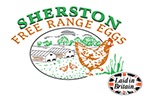There have been reported indications of the increased value of both barley and maize relative to wheat and the possible increase in their use in UK poultry rations.
Having provided a few notes on barley, I thought a similar, brief, profile on maize would be useful.
Maize, or Zea mays, is the domesticated plant originating from annual teosinte grass of Mexico.
Worldwide, maize is the most common cereal used in poultry diets, due to it’s low fibre content (2%), high fat (3-6%) and high palatability. Yellow maize is preferred to white maize, due to it’s carotene-precursor of Vit. A and xanthophylls.
In 1779, American troops came across a field of particularly sweet yellow maize, cultivated by the Iroquois Indians. But, this variety would only stay sweet for 24 hours, losing it’s sweetness after that and become more starchy. It took breeders in the 1800s to cross varieties to improve the quality.
The whole EU maize crop for 2020 has been calculated at 66.8mtn, mostly in France and Germany, with 15mtn, up from 13 mtn, and 4.6mtn, up from 3mtn, respectively. The French area would be 12% above the past 5 year average.
The US are also expecting a near-record harvest, in spite of drought conditions followed by a crop-destroying wind.
Imports from the US in the past, contained many “cracked” kernels, which were found to carry mycotoxins. Today it is hoped that consignments are of better quality.
A significant reduction in yield is seen for each day with maximum temperatures above 32 ºC. These are projected to average 10/summer across France in the period 2016-2035, with up to 15 in some areas and years.
Maize needs 450-600mm water per season. 15kg grain is produced for each ml of water consumed. At maturity, each plant will have consumed 250 litres of water.
It will also have taken up 8.7g nitrogen, 5.1g phosphorous and 4g potassium, so each tonne of crop will remove 15-17kg nitrogen, 2.5-3kg phosphorous and 3-4kg potassium.
Chemical composition of a maize kernel is 84% carbohydrate, 10.9% protein, 4.5% fat and 1.3% minerals.
High levels of maize can be tolerated by laying hens (up to 60% of the diet), but for growing pullets, it can result in poor feathering and slipped tendons.
The relative deficiency of sulphur-containing amino acids in maize has to be supplemented.









